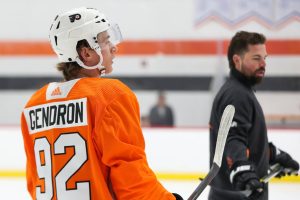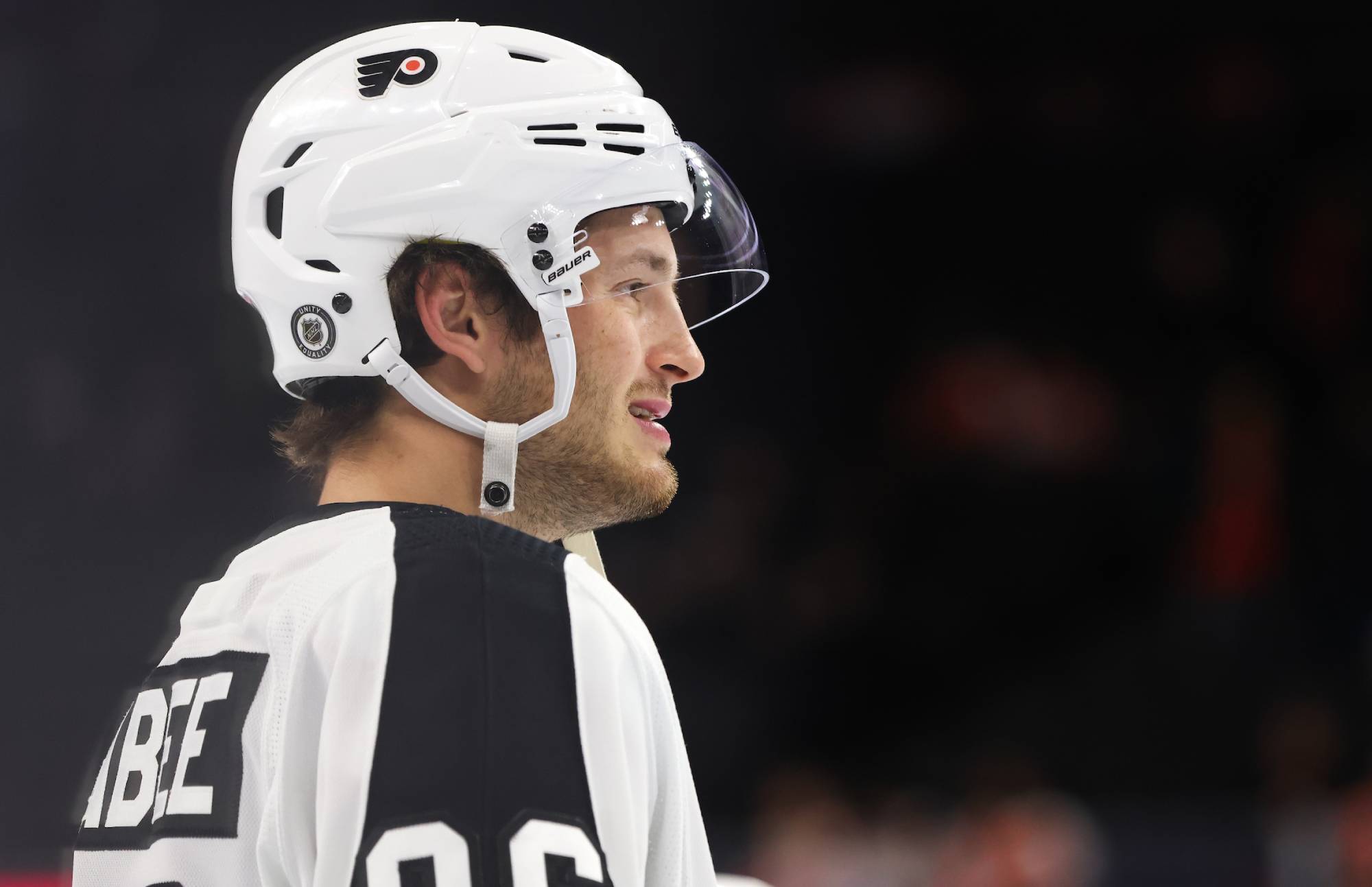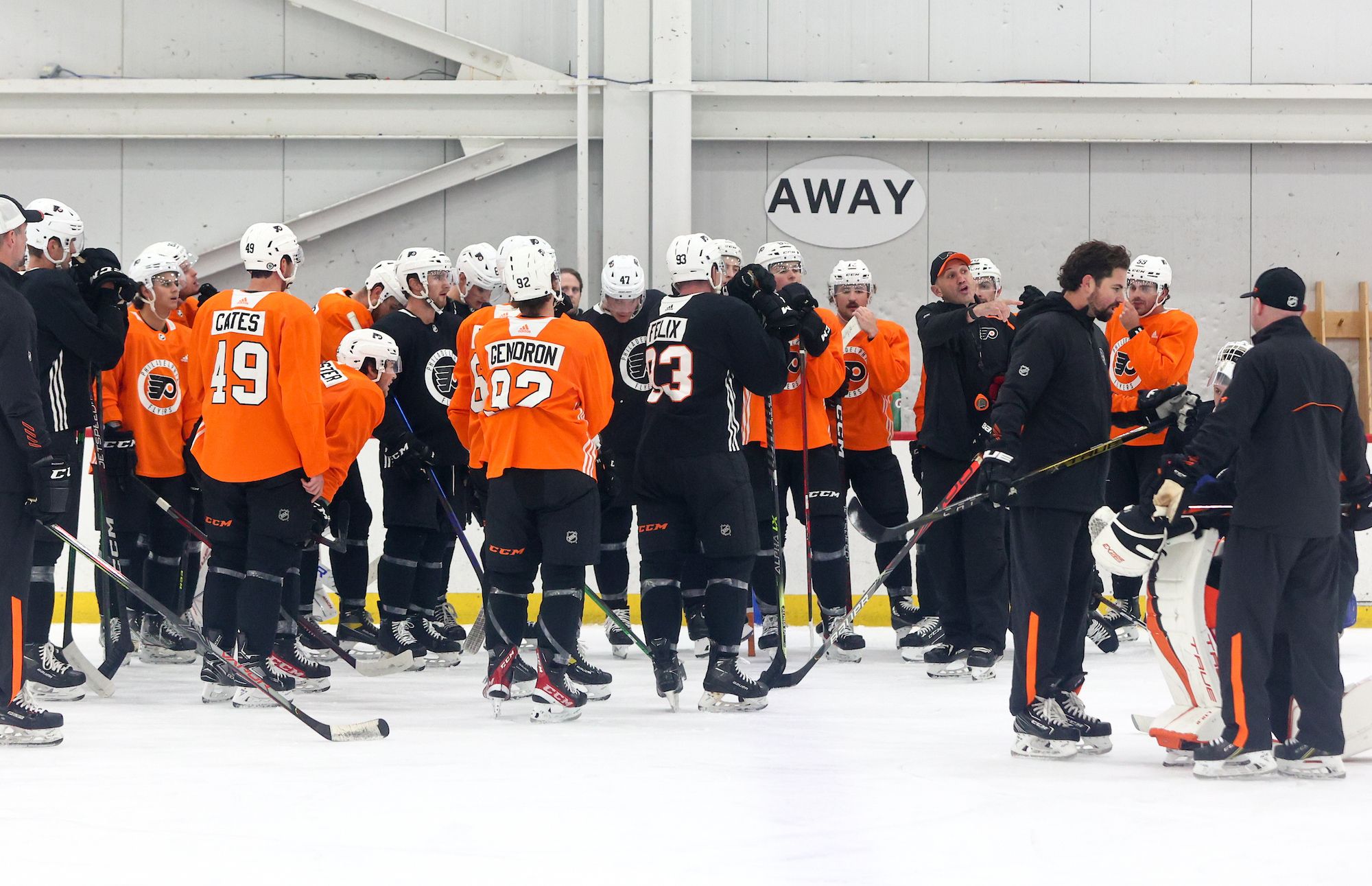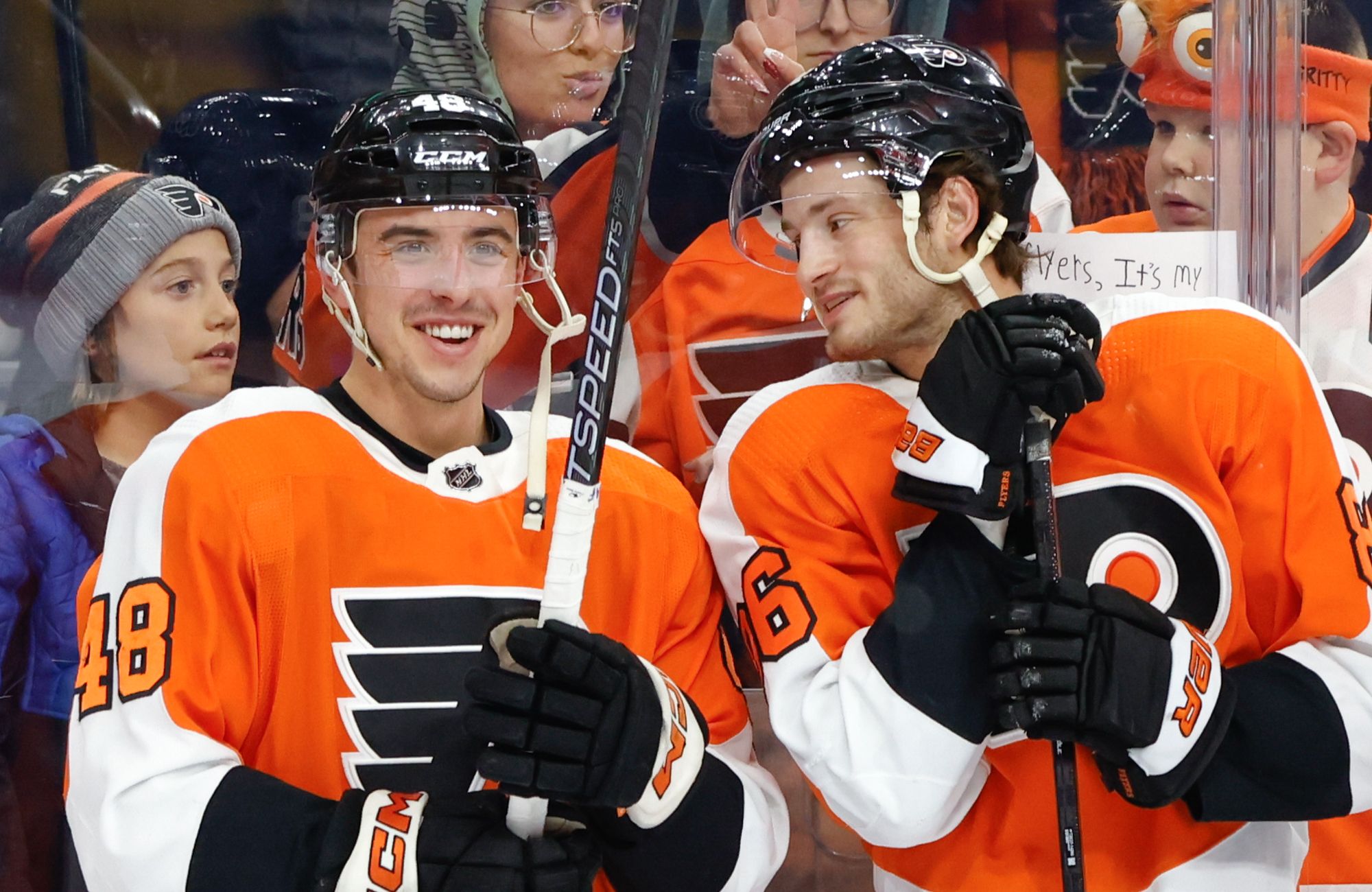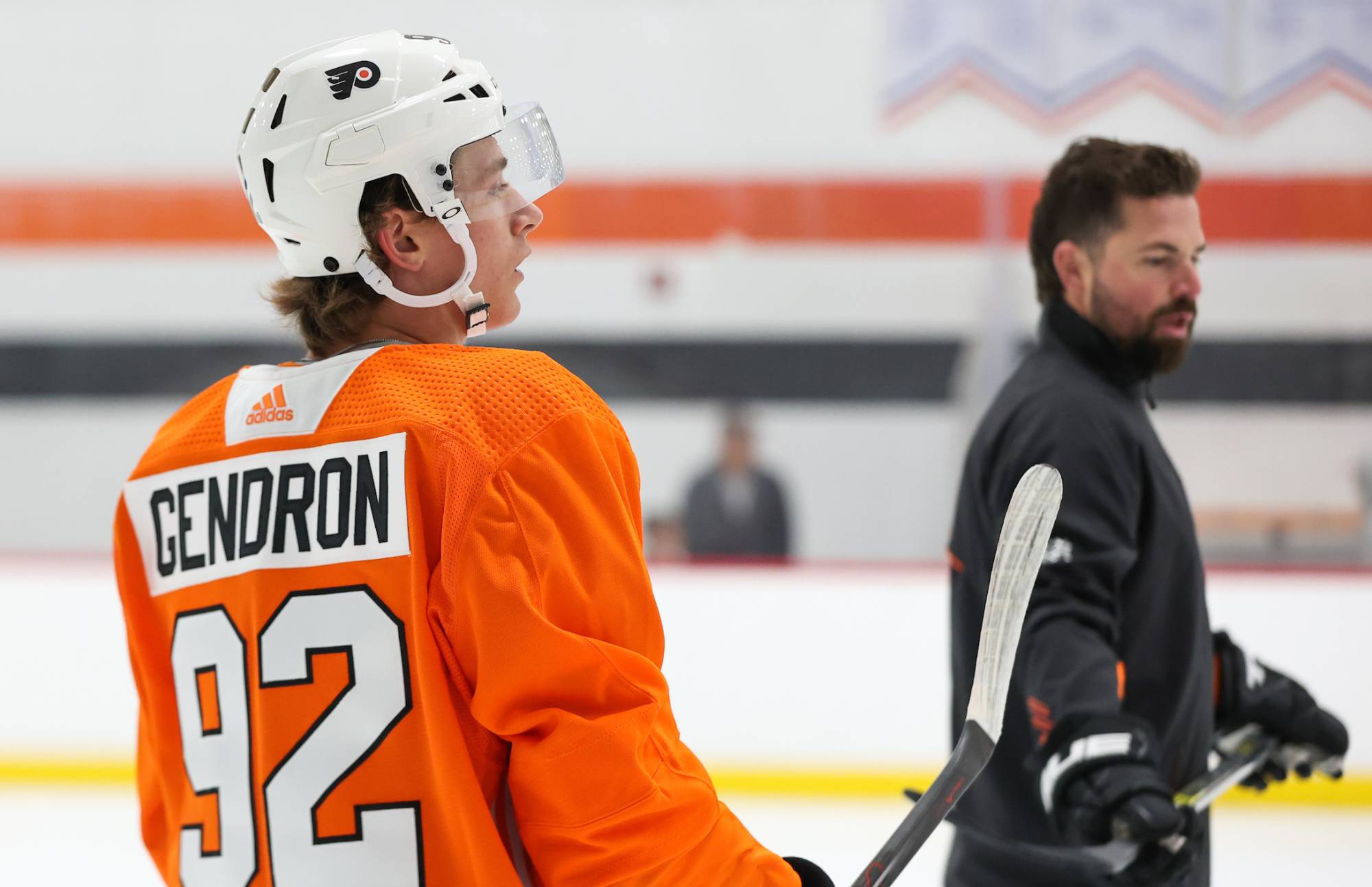Throughout this nine-game losing streak, a few of the Philadelphia Flyers’ biggest flaws have been put on display. The team’s lack of secondary scoring was illustrated by the team’s 297:25 streak without a goal from a forward not named Claude Giroux, Sean Couturier, or Jakub Voracek at the beginning of this losing streak. The team’s inability to take control of a game once they’ve gained a lead has been demonstrated, as they have led in seven of these nine losses, blowing a total of 11 leads (four of which were two-goal leads with a pair of those two-goal leads heading into the third period). Another issue during the losing streak has been the penalty kill. With at least one power-play goal against in seven straight games (11 power-play goals against in that span), the Flyers’ penalty kill is at 70.3 percent (26 of 37 kills) during the losing streak. Unfortunately, the problems with the penalty kill have been going on for a little longer than this losing streak.
Since Philadelphia posted an 84.8 percent penalty kill to finish seventh in the league during the 2013-14 campaign, the Flyers have struggled to limit power-play goals against. They haven’t finished better than 20th since 2014-15 and currently sit 29th in the league. It isn’t just the overall percentage that’s ugly, as the squad has posted the following numbers from the start of the 2014-15 season through Tuesday night’s action:
- 141 games with at least one power-play goal against (third most behind Arizona’s 148 and Winnipeg’s 142)
- 37 games with two power-play goals against or more (third most behind Arizona’s 47 and Winnipeg’s 45)
- Seven games with three power-play goals against or more (tied for seventh most)
- 55 games where penalty kill finished under 50 percent (third most behind Edmonton’s 61 and Arizona’s 60)/
Unfortunately, the problems with the penalty kill have been going on for a little longer than this losing streak.
Essentially, the only two teams that have struggled to kill penalties as much as the Flyers have since 2014-15 are the Arizona Coyotes and the Winnipeg Jets.
For a team that is hemorrhaging power-play goals against this season, the PK units are actually doing okay in terms of the number of shots getting through and the quality of those shots. Philadelphia is eighth in the league in terms of unblocked shot attempts allowed per-60 at 4-on-5 with 71.38 and drop to 15th in the league with a 7.1 expected goals against per-60 rate. Dating back to 2014-15, Philly’s 68.4 unblocked shot attempts per-60 rate places them sixth in the league, while their 6.14 expected goals against per-60 is tenth best in the league.
If the four skaters out there killing penalties are providing league average (if not better) killing capabilities, what are the possible reasons as to why the team continues to allow power-play goals against at an alarming rate?
DISCIPLINE
One possible reason that the PK unit might be struggling could be the team’s lack of discipline, which is an issue that really can’t be blamed on the penalty killers. Although the Flyers have the fifth-highest total number of times being shorthanded this season with 93, discipline has been an issue for the Orange and Black for a…uh…while. Their 868 times shorthanded since the start of the 2014-15 campaign is the tenth-highest total in the league during that time.
On top of taking penalties at 5-on-5, the Flyers have had a knack for finding their way to the penalty box in the midst of killing penalties. Philly has taken seven penalties while 4-on-5 this season, which is tied with the Nashville Predators for the second most in the league. This has led to the Flyers being one of four teams this season with two goals against or more while 3-on-5. In fact, the Orange and Black are tied with the Detroit Red Wings for most 3-on-5 goals against since the start of the 2014-15 season. Killing two-man advantages is still an important aspect of the penalty kill and can’t just be chalked up to bad luck, but obviously a 5-on-3 power play is a pretty high-leverage situation for the offense.
GOALTENDING
Another reason why the penalty kill isn’t all that great this season – or over the last few years – has been goaltending. So far this season, both Brian Elliott and Michal Neuvirth have seen 39 power-play shots-against or more. As two of the 42 goalies who have seen at least this many power-play shots-against in 2017-18, Neuvirth is ranked 39th with an .821 save percentage and Elliott is 40th with an .809 save percentage.
Neither of the goalies have looked great in terms actual goals-against versus expected goals-against, as well as Goals Saved Above Average (which are goals a goalie has prevented given his save percentage and shots faced compared to league average save percentage on same number of shots. Above zero is positive, below zero is negative). Elliott has allowed 14 power-play goals-against at 4-on-5 while seeing 9.5 expected goals-against and has a -4.5 GSAA. Neuvirth is about where he should be in both of these statistics, but is still on the wrong side of each. He has allowed 6 goals while being in net for 5.38 expected goals against and has a -0.62 GSAA at 4-on-5.
Regardless of who has been in net, since the start of 2014-15 through last night the Flyers have the lowest 4-on-5 save percentage in the league with .847. Looking at each of the 10 goaltending seasons among the six different goaltenders to see the crease for Philadelphia since 2014-15, nobody has been that great. No goalie has been able to finish a season with a save percentage of .900 or better at 4-on-5, and Neuvirth’s .898 in 2015-16 has been the closest . It’s also not great that only three goalies have been able to post an .850 save percentage or higher for a single season in that time frame with two being Anthony Stolarz’s .867 in seven games during 2016-17 and Rob Zepp’s .857 in 10 games during 2014-15.
In terms of actual goals against versus expected goals against and GSAA, Neuvirth’s 2015-16 season and Zepp’s 2014-15 season are the only two times a Flyers’ goalie has had a lower goals against total than expected goals against total and provided a positive GSAA at 4-on-5 for the entirety of a single season.
Laperriere has struggled to make the Flyers’ PK at least league average, but it isn’t for a lack of attempting to correct the situation.
COACHING
Ian Laperriere has been the man in charge of running the penalty kill since 2013-14. After that seventh-place finish in his first season, Laperriere has struggled to make the Flyers’ PK at least league average, but it isn’t for a lack of attempting to correct the situation. After the poor result of the 2014-15 season, Laperriere did change up the penalty kill’s approach heading into the 2015-16 campaign. During the current losing streak, Laperriere has shown a willingness to change up the PK by shuffling Giroux, Michael Raffl, and Valtteri Filppula into the mix while removing Taylor Leier completely.
A case can be made that Laperriere wasn’t really given the most skilled players to work with over the last few years. For instance, last year’s most utilized four-man unit was Pierre-Edouard Bellemare and Chris VandeVelde up front with Ivan Provorov and Andrew MacDonald on the back end. In 2014-15 and 2015-16, Nick Schultz led d-men in shorthanded ice time per game. Ideally, four of the five players listed above aren’t even on your team.
This season, however, Laperriere has been using more skilled players both up front and on the blue line (Provorov and Robert Hagg lead d-men who have played over 10 games with shorthanded TOI per game) and yet it seems as though the same problems are occurring.
When it comes to team discipline (which, again, isn’t the penalty kill’s fault but could put them in an unfavorable position by consistently being on the ice), the Flyers take a lot of penalties, but not enough that it should be considered a huge disadvantage to Laperriere and his killers. Nine teams have been shorthanded more times than the Flyers dating back to the start of the 2014-15 season. There aren’t a ton of teams ahead of them here, but it’s not as if the Flyers lead the league in times shorthanded and have put the penalty kill on the ice 30 more times than the second closest team.
In fact, before Laperriere took over the Flyers’ penalty kill units had to deal with a large volume of penalties to kill. In both the 2011-12 and 2012-13 seasons, the Flyers led the league in times shorthanded. After a 17th-place finish in 2011-12, the team’s penalty kill finished fifth in 2012-13. From 2006-07 to 2010-11, the Flyers were always in the top eight in times being shorthanded, but never finished below 15th in terms of penalty kill percentage, with three appearances in the top ten.
As for the goalies, it’s pretty unfair to pin weak goaltending on a particular coach, especially for a single game or season. However, if it’s a continued trend that a certain coach always receives the same level of goaltending from a variety of different goalies or the goalies that struggle with one team perform noticeably better with another team, is it fair to question the coaching?
The main goaltender Laperriere has had in his time as a PK coach is Steve Mason, which is rough considering he isn’t at his best when his team is shorthanded. In his time with the Columbus Blue Jackets (start of the 2008-09 season to late March of 2013), Mason had an .862 penalty kill save percentage, which was the lowest for any goalie who appeared in 150 games or more in that time span. Those numbers came with Blue Jackets teams that made the postseason once (and got swept), but were mainly at the bottom of the league standings. With Philadelphia, Mason had an .860 shorthanded save percentage to finish 20th among the 22 goalies who appeared in 150 contests during that time frame. So there was a slight drop in save percentage, but nothing too drastic. However there wasn’t an improvement and he really couldn’t have gone much lower.
The goalie with the second most time in net for Laperriere has been Neuvirth. In his three seasons with the Flyers, Neuvirth has gotten worse each year at 4-on-5. After he posted a .911 save percentage in this scenario during a career year in 2015-16, Neuvirth dropped to .829 in 20 games last season and is currently at .824 this season. Before his time in Philly, the worst 4-on-5 save percentage Neuvirth posted was .849 during 2014-15, where 27 of his 32 games came with The Completely Trying To Win Buffalo Sabres. He also had a pair of seasons with 4-on-5 save percentages above .900 and another two seasons above .895.
Ray Emery is third in terms of games played for Laperriere, who was slowing down and had hip injuries impacting him before he bowed out after the 2014-15 season.
That brings us to Elliott. It’s a small sample size of 18 games, but at the moment he has a .797 4-on-5 save percentage this season, which would be the lowest of his career for a single season. Again, it’s only 18 games, and his two lowest 4-on-5 save percentages for a single season came in years where he didn’t play a ton of games (.822 in 17 games with the Ottawa Senators in 2008-09 and .825 in 24 games with the St. Louis Blues in 2012-13), but it doesn’t look like a promising season for the netminder on the penalty kill.
Could the 32-year-old Elliott, much like Emery did in his final two seasons with the Flyers, be losing a step? Possibly, but it wouldn’t make sense that he’d still be posting a .939 save percentage at 5-on-5 this season if that were the case, the third-highest average among the 31 goalies who have played at least 500 5-on-5 minutes this season.
There are several factors that go into why this penalty kill has been so poor over the last few seasons. The question is whether or not the PK hasn’t been successful due to approach or luck. With a rotation in skaters and in net but a common outcome overall, it seems to be the former more than the latter.



